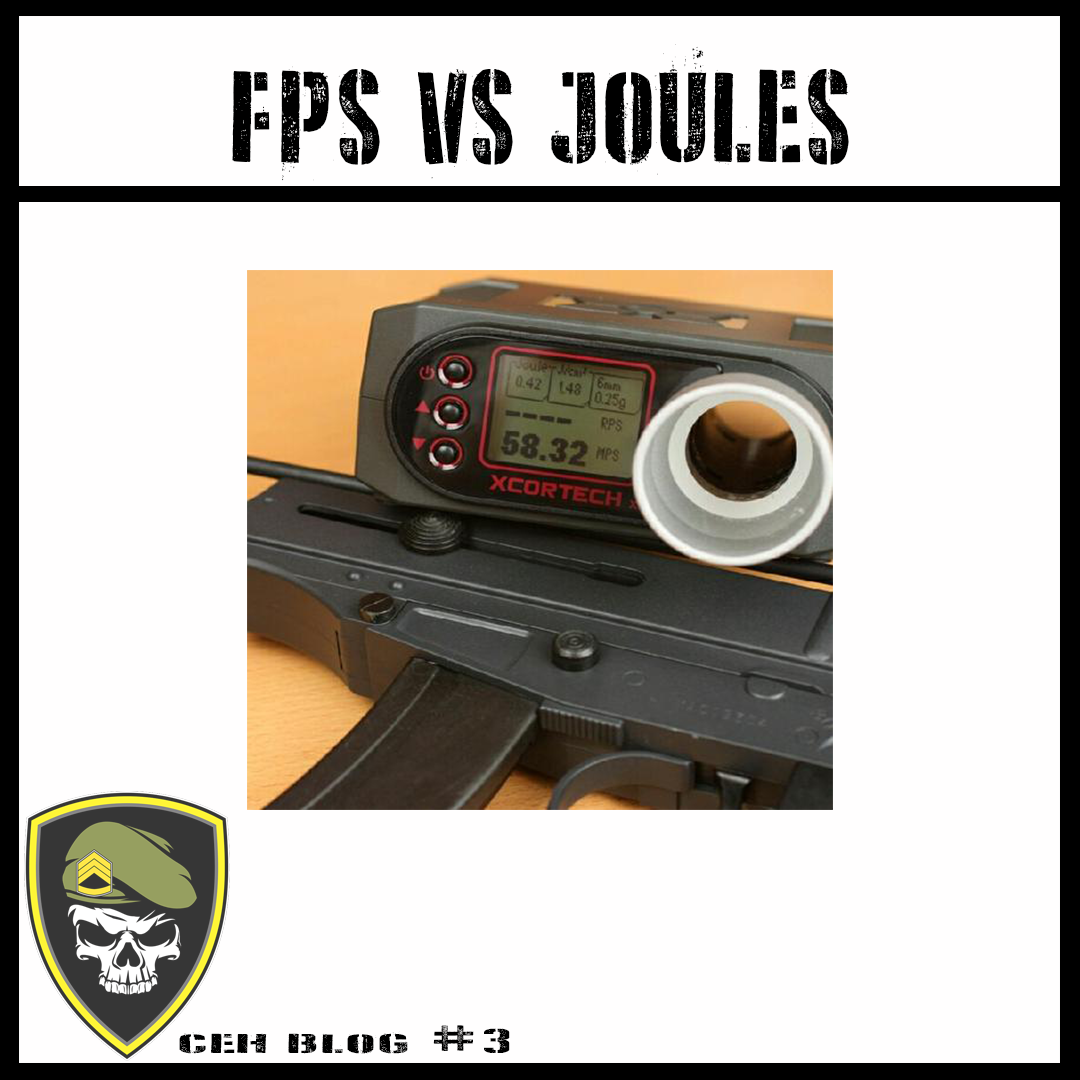If you have ever had occasion to chronograph your gun, you might have noticed that you get a FPS (Feet Per Second) reading, but also another reading, called joules (J), and maybe you’ve wondered what those numbers mean, and how they compare to each other.
Both measurements are key to understanding the performance of your blaster, however both are providing different data measurements for what the gel ball is actually doing as it leaves the barrel.
FPS is the abbreviation for ‘Feet Per Second’ and is a measure of velocity, it is a measurement of the speed with which your gel ball is leaving the barrel, or in real steel lingo – the muzzle velocity of your gel. Using a heavier gel would impart similar, or more kinetic energy, at a lower fps.
Joules is the International System unit of kinetic energy. The main factor that influences changes in joule rating, is the weight of the round. Hardness or softness of the round matters very little to the joule reading.
To calculate kinetic energy (in Joules) for either airsoft, or gel ball, we use this formula:
KE (in Joules) = 0.5 (a half) X the mass of the bb/gel ball (in kg) X the speed squared.
or
KE = 0.5 . m . v^2
As an example for the above formula; a .20 gram bb is moving at 328 feet per second [.5 * (.20 grams / 1000 kilograms) x (328 feet per second x .3048 meters per second) ^2 is equal to 0.999488 or 1 Joule.
But of course, what does this mean?
A good analogy to use here, when comparing FPS and J numbers, is car engines: horsepower and torque. This may seem odd, but it makes sense if you think of it in these terms. Horsepower is how fast you hit the wall, torque is how far you take the wall with you after hitting it.
When we apply this concept to gel blasters or airsoft guns, FPS is how fast the BB leaves your barrel, or how fast it is travelling between point A and point B. Joules is how much energy is has left to strike the target.
It’s important to note, that consistency (hardness) of the round being fired matters very little to the measurement of joules, except in cases where the harder consistency results in a heavier gel ball.
To date, almost all gel balls fall within a .02 gram consistency, and the amount of joule increase or decrease is negligible.
For this reason, we encourage field owners and players to acquaint themselves with joules and how to measure them accurately, thus ensuring a greater level of safety for all players.
Hope this info is of some use!
See you on the field!
- Grant "Thurisaz" Pidgeon


